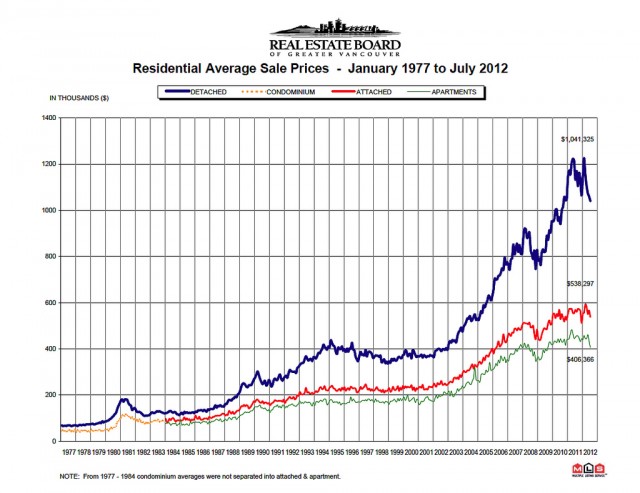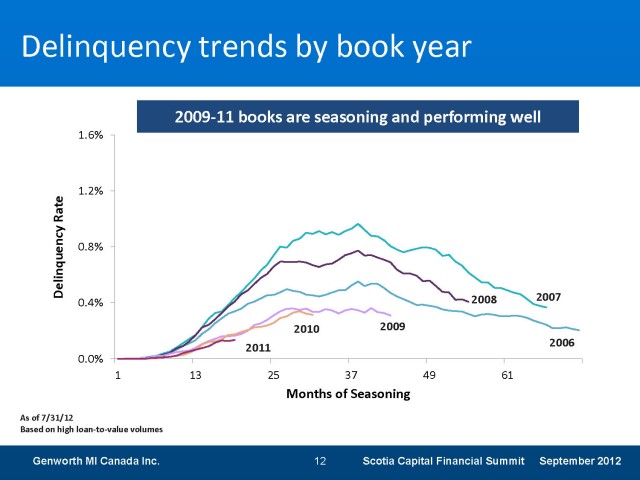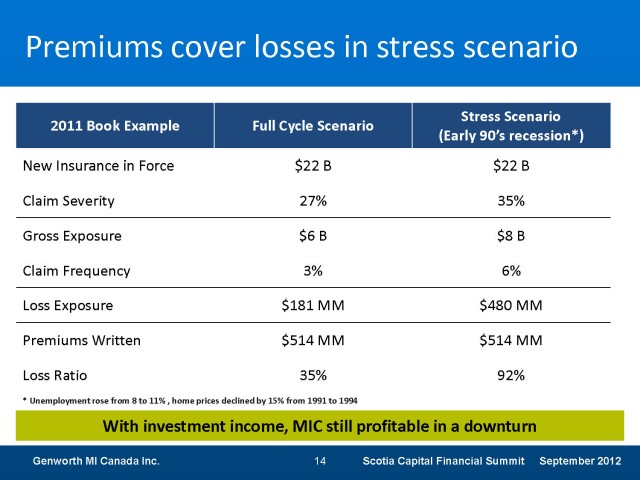RIMM upcoming quarterly report
RIMM’s (Nasdaq: RIMM) expectations have finally been driven deeply into the red – an expected loss of 46 cents for this upcoming quarter, 1.49 loss for the current fiscal year and 71 cents for the next fiscal year (year ended February 2014).
I earlier suggested that potential investors in RIMM should wait until these estimates go deeply negative. They are now currently negative and I would suspect after this quarterly report, the company is going to get expectations to the point where the risk has been correctly priced in if not already there.
While I am not buying RIMM shares, people that believe in Blackberry 10 and its potential probably have a correctly timed entry point in the remainder of this year – especially as most institutional investors will be sitting on tax losses and would likely want to clear it out of their portfolio or risk embarrassing themselves.
There is still obvious technology adoption risk for the company – if they execute well then you might be sitting on a double or even more if they are able to regain market share (and perhaps the more important mind-share of the developers). If they don’t, well, then you get a Nokia (NYSE: NOK) where you start pricing the company based off of salvage value.
Does High Frequency Trading add value to the market?
Reading Mark Cuban’s post about High Frequency Trading (HFT), indeed, I agree with him that it provides little value to the marketplace.
The incentives are completely geared toward having it, however – the stock exchanges make money on volume and have no incentive to stop it. The traders themselves are able to do it profitably and have no incentive to stop.
The easy solution to fix this problem is to simply transform the stock market into one second auction windows – i.e. every second that the stock market is open (6.5 hours, which translates into 23,400 seconds) bids and asks are aggregated and transactions are appropriately processed.
This would also undermine the value of sub-penny quotations and seriously reduce the value of phantom quotations that try to “probe” what hidden support there is in the order book.
There would be a decrease in volume, but most of the volume you see today is “phantom liquidity” – it is liquidity that would never be truly accessible for somebody wanting to accumulate or distribute shares at a certain price level.
This change is unlikely to be enacted, however, since it does nothing politically for those that control the securities commissions – the regulators’ incentive structure is favoured toward higher complexity, and thus more requirements for regulation.
More specifically, securities regulations has little to do with “investor protection” – rather, it is about entrenchment of established interests.
As long as interest rates remain low, Canadian real estate should remain flat
Interesting articles on the Globe and Mail (link 1, link 2) from TD and Scotia regarding house prices.
I tend to agree with the general projections that prices will probably compress around 10-15% in the medium term, but there will not be a precipitous crash in the real estate market.
I will give one strong condition to this, however: interest rates must remain at suppressed levels.
Note the following chart (of Vancouver real estate prices):
A parenthetical note is that this chart should be using a logarithmic y-axis as a linear graph distorts relative price movement at higher levels – this is why you never see stock charts scaled on a linear fashion.
Vancouver detached properties are still ridiculously overpriced (and will be a likely exception to the 10-15% rule simply due to the abatement of the well-known foreign capital influx), but I will bring your attention to the chart between 1994 and 2001, where minimal growth was seen in prices in all relevant markets.
It is likely that we’ll see such meandering for the next few years, providing that interest rates remain low.
Real estate has an embedded cash conversion feature – you can rent it out for cash. The value of this rent is higher during low interest rate periods (simply because you can’t sell the real estate asset and invest that cash into risk-free bonds) and lower during high interest rate periods. On a more retail level, if you are spending $2,500 per month to rent a home in Richmond, BC, you will need to earn $30,000 in after-tax dollars to pay for that rental. This is about $35,000 pre-tax after income taxes and statutory deductions. Add in regular living expenses and the like, and a $30,000 after-tax commitment translates into about $42,000 pre-tax earnings for that rental expense (assuming a 30% marginal rate for the middle income bracket in BC).
The equivalent of that $42,000 pre-tax expense is about $1.4 million at a 3% return, $1.05 million at 4%, or $840,000 at 5%. Your risk-free rate on a 10-year Canadian government bond presently is 1.9%.
Note this calculation does not factor in carrying costs (taxes, maintenance, etc.), but is designed to illustrate changes in theoretical valuation between certain interest rates.
In context of equivalent yields and real estate values, one can easily rationalize how in the rest of the country except for some very heated markets (Richmond, Point Grey in Vancouver, etc.) that valuations are where they should be, given the interest rate environment.
People concerned about a change in interest rates that don’t want to go through the hassle of selling their properties have a very simple financial option to hedge themselves against interest rate risk: sell treasury bond futures.
More Genworth MI propoganda
Another reason why Genworth MI Canada (TSX: MIC) is a cash machine is because delinquency rates have significantly decreased since the 2008-2009 financial crisis:
Also, a stress test scenario where unemployment goes from 8% to 11% and property values go down 15% (which seems to be a low number – higher decreases in property prices would increase severity):
Unless if there is a huge crash in the commodity market, I don’t see this happening. The crash might occur, but not when you have massively loose monetary policy like we do today. The only reason why the stock got as low as it did (bottoming out at $16.72) is betting on a massive real estate bust. Now those expectations are moderating somewhat.


